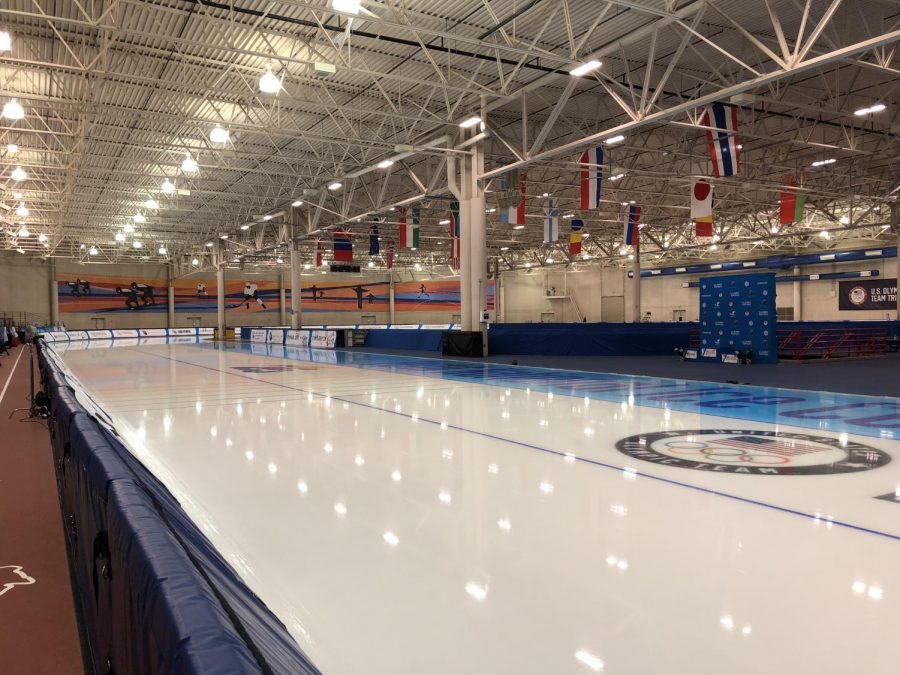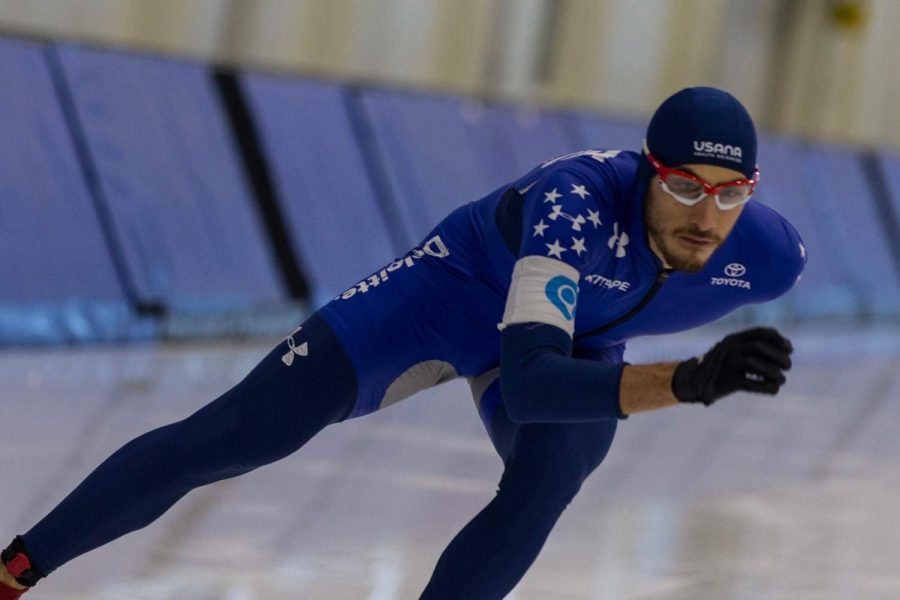
Milwaukee generally brings three things to mind: beer, brats and festivals. The Pettit National Ice Center in West Allis is lesser known but still an attraction to the area. It offers opportunities for students and the community, a beginning for skaters of all skill levels and a training ground for Olympians.
Constructed in 1992 as a nonprofit corporation, the facility was named after Jane Bradley Pettit, a Milwaukee philanthropist whose contributions provided its primary funding. The center hosts speed skating competitions and nearly 500,000 annual visitors a year, according to its website.
As the only indoor sea level oval in the country and one of two U.S. Olympic indoor training sites — the other is located in Salt Lake City, Utah — the center was deemed “mission critical” for athletes preparing for the 2014 games in Sochi, Russia, according to the center’s website. The oval in Sochi is also at sea level.
The center houses 3,000 seats, a 400-meter speed skating oval, two Olympic-sized rinks and a two-lane jogging track, among other features.
Although the center might seem solely directed toward professionally trained athletes, about 10,000 students visit on field trips each year and 12 skating clubs call the Pettit home. Community programs like youth and adult hockey, skating school, figure skating and senior citizen skaters show the Pettit is more than just a training ground.
The student appeal
With Marquette in close proximity, the world-class facility is the reason some students come to Milwaukee and also a great recreational space for others.
One individual drawn to Marquette was Brian Hansen, a freshman in the College of Business Administration and a silver medalist at the 2010 Olympic games in Vancouver. Hansen won his medal in the Men’s Team Pursuit alongside teammates Chad Hedrick, Jonathan Kuck and Trevor Marsicano.
Hansen said when applying to colleges, his options were in Milwaukee and Utah due to the nearby training facilities. He chose Marquette because it was “all around the best school” out of his possible choices.
A speed skater since the age of 10, Hansen has trained at the Pettit for eight of those 10 years. He said he used to drive more than an hour from his home in Glenview, Ill., to train at the facility.
“There are only so many facilities like that in the world,” Hansen said. “Not just for training either. … There aren’t many places where anyone can skate on an oval like it has.”
He also said the center is a notable aspect of the city and attracts many Olympic athletes such as himself.
“If you don’t come out of Salt Lake, you come out of Milwaukee,” he said in regards to speed skaters. “It’s possible to see athletes training every day.”
Hansen currently trains at the Pettit five days a week, averaging six to seven hours per day.
The Marquette club hockey team also trains at the Pettit. Richard Bennett, a junior in the College of Business Administration, said the team began training there five years ago.
“It’s nice to have a rink that is so close by,” Bennett said. “We don’t have to wait for ice time, and they’re very flexible and affordable with our dues.”
[youtube]oiDm3kHTDDg[/youtube]
More than a landmark
The Pettit not only attracts and serves Marquette students, but also provides recreational enjoyment and educational opportunities to the community. Randy Dean, executive director of the facility, said it accommodates large numbers of skaters and maintains reasonable prices.
“Public skating is big, and the price we charge is less than what it costs to go to a movie,” Dean said. “People get value in a healthy way.”
Public skating costs $5 for children and seniors, $7 for adults and $3 for skate rentals.
Katie Lawler, a sophomore in the College of Communication, said she would like to learn more about the facility and make it to a public skating session.
“I always drive by the Pettit, but I’ve never been in it,” Lawler said. “I definitely think it’s something that I would love to explore, and others should, too.”
Examining a more organized aspect of the facility, Dean spoke of the center’s “Schools on Ice” program that welcomes Milwaukee Public Schools’ elementary students and teaches them how to skate.
“The kids receive enough lessons to build their confidence and teach them that skating is a lifelong sport,” he said. “A lot of the time it replaces physical education programs that have been cut.”
The Pettit’s economic impact on Milwaukee could help boost the economy and potentially minimize governmental budget cuts — like the one MPS is experiencing — granted it steadily continues. According to its website, the World Cup Speed Skating competition in 2005 generated $2,500,000. The U.S. National Short Track competition in the same year drew competitors and fans from 33 states.
Alderman Michael Murphy of the 10th District, home to the center, said the Pettit places Milwaukee in a unique situation. He said although the Salt Lake City facility competes for Olympians’ training time, the Pettit is beginning to attract more athletes, increasing the city’s notoriety.
“Marketing and generating awareness of what the center provides are key in attracting people both to the center and Milwaukee,” Murphy said. “The more knowledge the community has about the center, the more local opportunities will open up.”
The Alderman said he hopes for further development of the area surrounding the center, suggesting that something must be done with the additional Pettit-owned land.
“The area the Pettit resides in is incredibly valuable,” Murphy said. “It could be a pivotal location for numerous small businesses and the development of the I-94 Zoo Interchange. Both of these aspects would be important additions to the center and its value to the community.”
Mission critical: USA
Although the facility prides itself on its availability to the public, the fact is Olympic athletes are currently training in Milwaukee’s backyard. Even if the Vancouver games are now far from the minds of most, the Olympians never stop training, even after the games are over.
The Pettit has provided training and competition space to every Olympic speed skater since its opening, according to its website. Paul Golomski, the center’s facility director, said it has housed 10 to 15 World speed skating competitions, along with last year’s Olympic trials.
“The training sessions and competitions are open to members of the public,” Golomski said. “Athletes can train on the same ice as what a 10-year-old kid can.”
Shani Davis, a gold medal speed skater and the first African-American to win an individual medal, trains at the facility on a consistent basis. Athletes such as Bonnie Blair and Dan Jensen broke the ice in after the center opened prior to the 1994 Olympic games.
Olympian Apolo Anton Ohno has trained and competed on the Pettit’s ice, although he does not call it home.
Golomski said speed skating is a tough sport to promote in the U.S., but the center and its Olympic connection raise Milwaukee’s prestige.
“We try to let the public know we’re here,” he said. “It’s not just about the athletes. … We’re a community asset as well, open to anybody that wants to skate and build a healthy lifestyle.”







